This bustling, fishing town on the west coast of Sri Lanka (and close to the Bandaranaika International Airport), had a rather turbulent colonial history involving the Dutch, Portuguese and British due to the cinnamon trade. In fact, the wild cinnamon that grew in the region was described as ‘the very best in the universe as well as the most abundant’. The remnants of this colonial period remain with the strong Catholic Church influence in the town. The Negombo Lagoon and the many canals offer superb birdwatching, the town’s Old Quarter is worth a visit, and the community is friendly and welcoming.
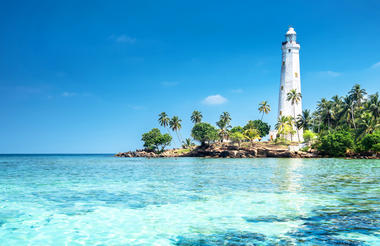
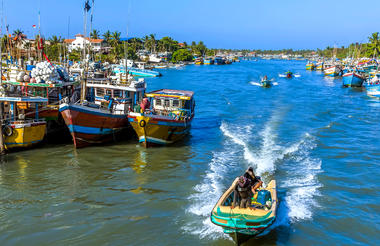
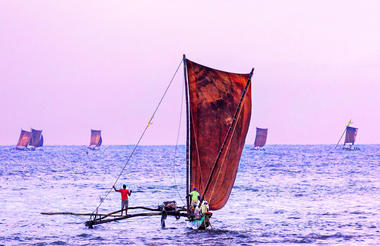
Situated in the Central Province's Matale District, of Sri Lanka, Dambulla is a large town famous for its 2000-year-old rock cave temple known as ‘Dambulla Cave temple’ (or ‘Golden Temple of Dambulla’). This UNESCO World Heritage Site is said to be the largest and best-preserved cave temple complex in Sri Lanka, encompassing numerous caves filled with a collection of religious statues and colourful murals. The surrounding area boasts the most extensive rose quartz mountain range in South Asia. Don’t miss the opportunity to visit the Ibbankatuwa Ancient Burial Site - a significant and fascinating archaeological site.



Sandwiched between the bustling capital of Colombo and the thriving city of Kandy in Sri Lanka's central highlands, the attractive town of Kegalle serves as the main commercial centre of the Kegalle District and the gateway to the naturally beautiful central hill-country. The town offers panoramic views of the lush rolling hills, which are dotted with an array of unusual temples - many of which have been built around natural caves. Other popular attractions in the area include the exquisite Algama Falls, which feature lovely natural swimming pools; the gorgeous Wewaladeniya Viharaya temple, located in the middle of town; a number of beautiful spice plantations; and the nearby village of Molagoda, which is renowned for its traditional clay-based handcrafts.



Resting on the southern edge of Sri Lanka’s picturesque Hill Country, the small, sleepy village of Ella is known for its exceptional natural scenery, its wonderfully tranquil atmosphere, and its pleasantly moderate climate. This popular backpacker-hub has become a well-established, must-see tourist destination and an ideal base for travellers exploring the idyllic surrounding countryside cloaked in tea plantations and lush forest. With only a handful of essential stores and tourist facilities, Ella has managed to retain its rural charm and visitors will find a single street winding its way down the hillside past a few quaint cafés, guesthouses and cottages enclosed in neat, flower-filled gardens. At the edge of the escarpment, you will find a classic view past the renowned Ella Rock on the right and through a cleft in the hills – the so-called Ella Gap – to the plains far below.



Tissamaharama, also known as Tissa, is a major starting point for wildlife safaris in Sri Lanka’s most famous national park, Yala, officially known as Ruhuna National Park. Surrounded by rice paddies and ancient temples, Tissamaharama is known for its rich cultural heritage and beautiful natural surrounds. Aside from its plentiful cultural and religious offerings, it is also a nature lover’s paradise. The Tissa Lake attracts flocks of roosting egrets, and a safari in the Yala National Park is a must. It covers an area of 1 260 square kilometres, but only one fifth is open to visitors. The remainder is designated as a natural reserve home to various wildlife, including elephants, leopards, sloth bears, water buffalos, wild boars, golden jackals, and spotted deer.
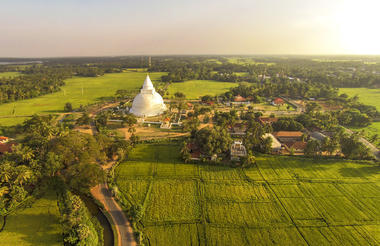

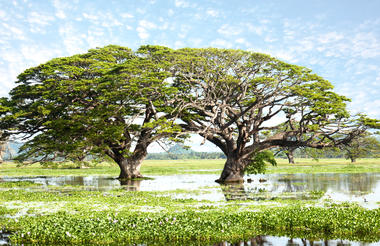
The large port town of Tangalle, in the southern province of Sri Lanka, offers locals superb fishing opportunities from a haven of sandy beaches, interspersed with photogenic rocky outcrops (giving the town its name - which means ‘projected rock’). Remnants of Dutch colonialism can be seen in the architecture; for example, in an old fort functioning as a prison today. The town serves as a starting point for a visit to the rock temple of Mulkirigala, situated on a rocky crag some 16 kilometres to the north. The temple consists of seven caves on five terraced levels, where visitors can view a number of large reclining Buddha statues interspersed with smaller sitting and standing figures, as well as some fantastical wall paintings.







